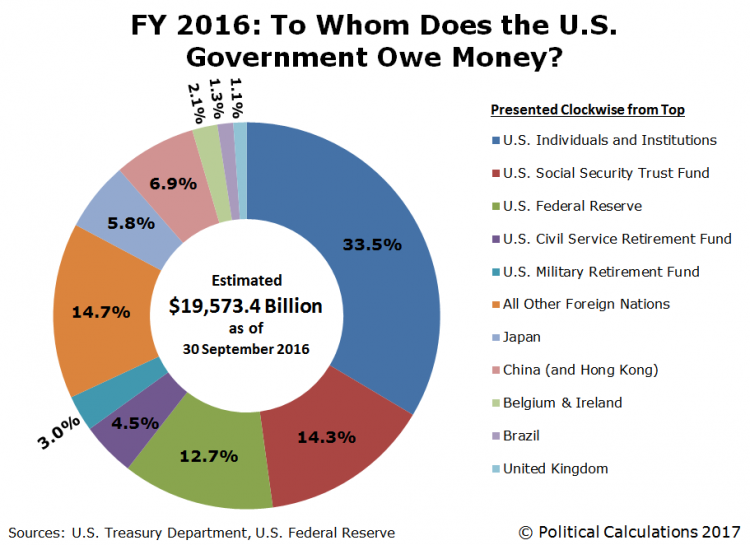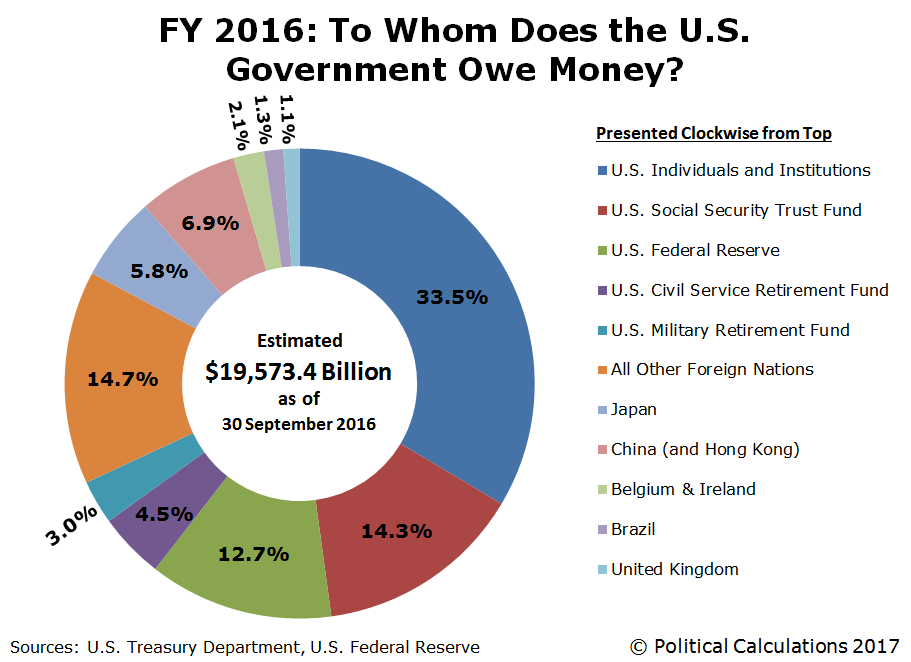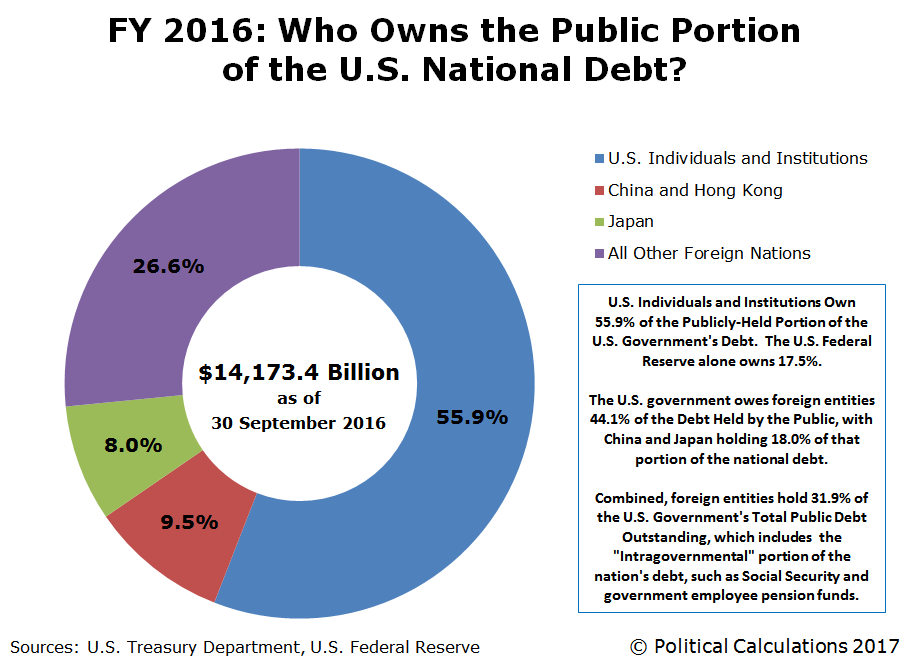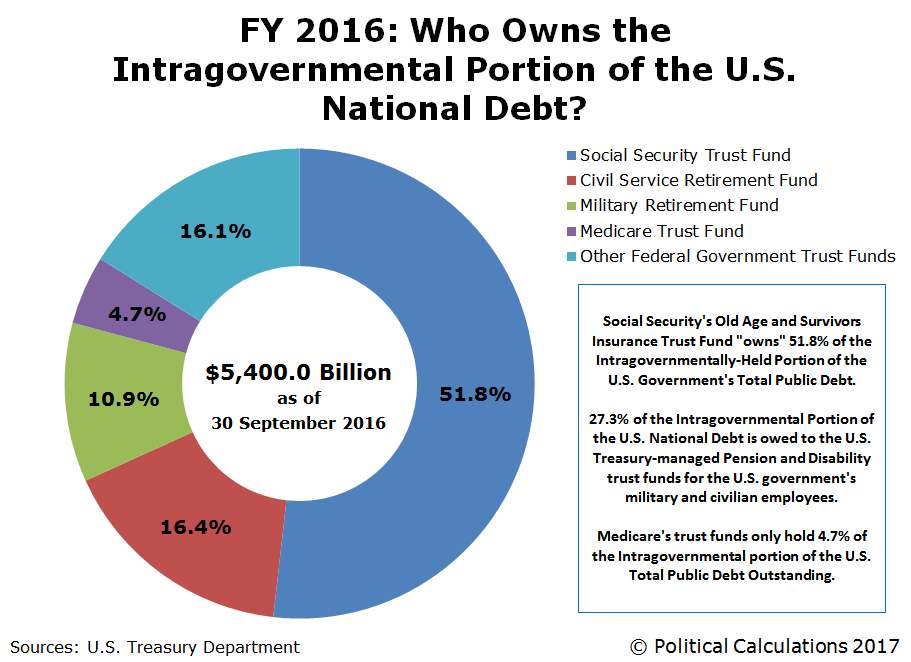
One of the crazier things about the U.S. national debt is that it often takes a lot of months after the end of a given fiscal year for the U.S. Treasury to sort out who the U.S. federal government owes money, particularly when that money is owed to foreign entities.
So here we are, just over halfway through the federal government’s 2017 fiscal year, before we have a good idea of how much U.S. government-issued debt was held by its major foreign creditors at the end of the U.S. government’s 2016 fiscal year, which ended on 30 September 2016! The following chart reveals who the biggest holders of the U.S. national debt were as of that time:

Officially, the U.S. government’s total public debt outstanding is divided up into two parts: the “Public” portion of the national debt….

And the so-called “Intragovernmental” portion of the national debt, where the latter category represents money owed to various trust funds established and operated by the U.S. government.

Right now, we can see that Social Security’s Old Age and Survivors’ Insurance Trust Fund accounts for a little over half of the Intragovernmental portion of the U.S. national debt, which works out to be nearly $2.8 trillion, or about one-seventh of the U.S. government’s total public debt outstanding.
If Social Security’s Trustee’s are right, that number will steadily shrink to zero over the next 17 years, as that debt is cashed in to pay retirement benefits to Social Security recipients. When that number does reach zero, Social Security’s Trustees have indicated that the program will be forced to revert to the program’s original Pay-As-You-Go basis, where benefits can only be paid out of the payroll taxes that fund Social Security. When that happens, they predict that all Social Security benefits will need to be cut by 21%, unless Social Security’s payroll taxes are increased from 12.4% of earned income (which is currently equally split between employers and employees) up to 15.78% of earned income.















